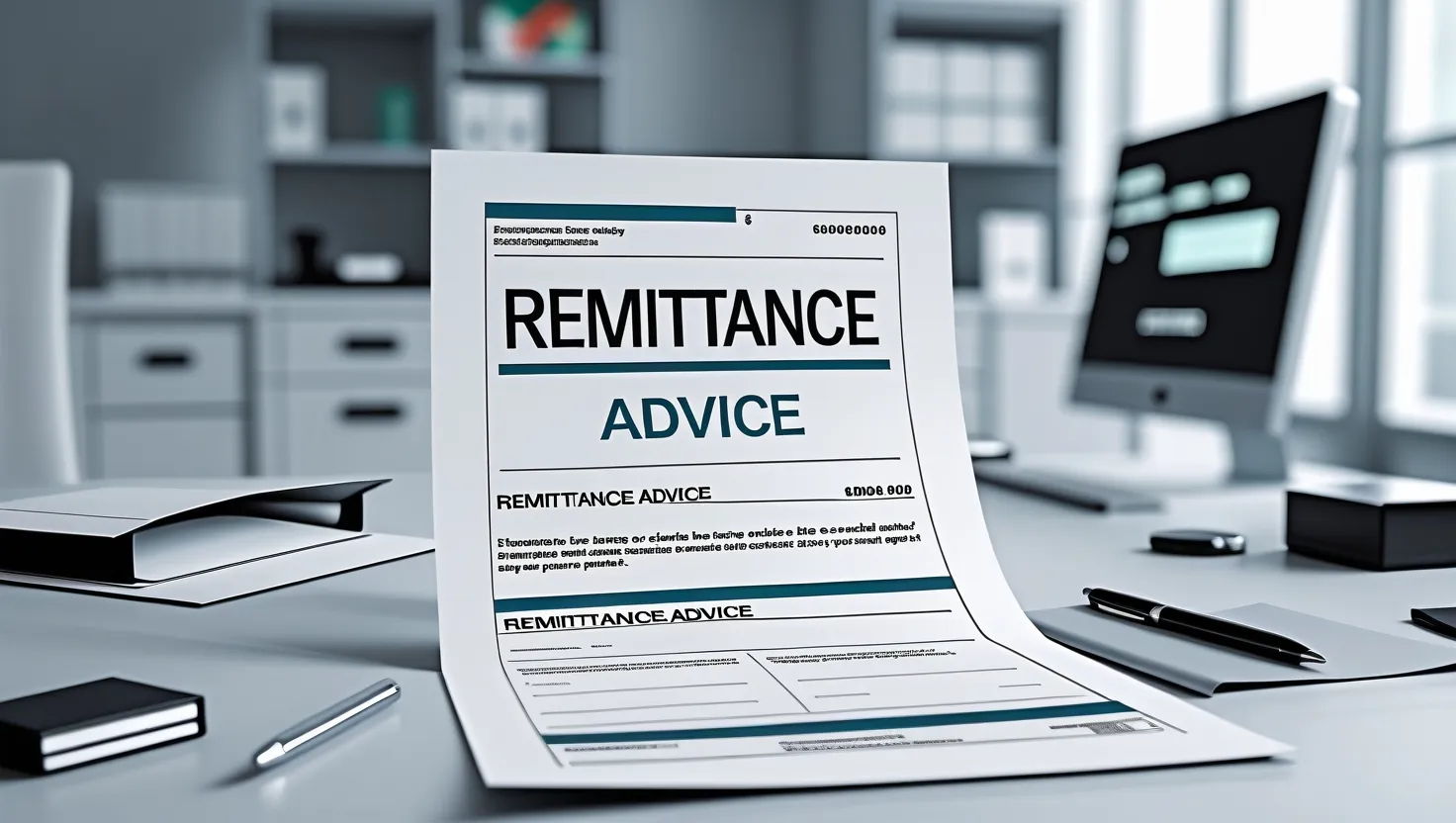
What Is Remittance Advice? #
A remittance advice is a notification indicating that a payment has been made. When one company pays another, the payer can send this note to verify the transaction.
Think of it like a receipt—but from the buyer instead of the seller. It helps both parties track money. For small businesses in India, it makes payments more organized and records easier to manage.
If you’re running a business, using this kind of document can help you stay in control of your finances and build stronger trust with your customers and vendors.
Why Small Businesses Need Remittance Advice #
Smaller businesses usually have limited funds. That means each transaction matters. These payment notes offer support by:
- Verifying a payment has been processed
- Maintaining organized financial documentation
- Avoiding billing errors
- Enhancing your business’s professional image
Dispatching these notes demonstrates accountability. Being aware of payment schedules reassures your suppliers about their security.
How Remittance Advice Helps You Work Smarter #
This tool can help you save time and alleviate the stress of repeatedly reviewing identical records.
It assists you in:
- Preventing payment confusion
- Addressing problems more swiftly
- Monitoring who made payments and their timing
By maintaining organized records, you can concentrate more on expanding your business.
What’s Inside a Remittance Advice? #
A proper payment note should include:
- Who paid – The name and contact info of the buyer
- Who received it – Details of the seller who got the payment
- How much was paid – The exact amount sent
- Payment date – When the transaction happened
- Invoice number(s) – The bill(s) linked to the payment
This makes it easy to match payments with the correct invoices.
Types of Remittance Advice #
1. Electronic Remittance Advice (ERA)
You can send this by email or through accounting software. Fast, convenient, and fits smoothly into your system.
Many businesses like this method because:
- No paper is needed
- It saves time
- It updates records instantly
- It can be shared in just a few clicks
2. Paper Remittance Advice
Some still use handwritten or printed versions. This can work if your business doesn’t rely much on technology or internet access.
Understanding is easy, but it can take more time and is harder to store.
Make Remittance Advice Match Your Business #
You can personalize these documents to fit your company’s needs.
- Add your logo
- Include extra info for your suppliers
- Match the format to your accounting software
Vyapar App lets you customize them to match your brand.
How Remittance Advice Helps Track Every Payment #
Small companies send and receive many payments. Keeping track of them all can get messy.
Using these notes helps:
- Prove each payment was made
- Match them to the right invoices
- Avoid confusion during audits
Having a payment map with every detail marked feels like a valuable resource.
Top Benefits of Using Remittance Advice #
- Clear Records: Payments link directly to invoices, which keeps errors low
- Better Cash Flow: Track money in and out, helping you plan better
- Quick Fixes: Disagreements are easier to handle with written proof
- Faster Accounting: This speeds up your bookkeeping process
- Improved Trust: Being timely and clear builds stronger business connections
When to Send Remittance Advice #
Always send one after a payment, especially when:
- The sum is substantial
- You’re collaborating with a new supplier
- Your usual vendors require verification
Sharing these notes on time helps everyone stay informed.
Easy Steps to Send Your First Remittance Advice #
- Collect the Details: Record who got paid, the amount, invoice number, and date
- Pick a Format: Choose digital or paper
- Create the Document: Fill in the right information or use tools to help
- Send It: Email or deliver using your chosen method
- Match the Records: Link the payment with your invoice and log it in your books
Keep Your Records Updated #
Maintaining up-to-date financial records ensures you:
- Are prepared for audits
- Have a clear view of your cash flow
- Can identify overdue or missing payments
Such practices streamline bookkeeping.
Review Your Accounts Often #
Even when utilizing these tools, it’s wise to review your records:
- Examine your bank statements
- Match them against your notes and invoices
- Address any discrepancies promptly
This practice keeps your business aligned and avoids expensive mistakes.
Common Problems and How to Avoid Them #
- Typing Mistakes: Errors in names or numbers cause confusion—use tools that auto-check data
- Delays in Sending: Send payment confirmations right away
- Lost Copies: Store your documents safely, digitally or on paper
- No Automation: Don’t stick with manual work when automation can help
- Messy Layouts: Use the same format each time for easy reading
Best Tips for Using Remittance Advice #
- Double-check details before sending
- Share it right after payment
- Keep backup copies, even if digital
- Regularly match payments with invoices
- Use accounting apps to speed things up
These tips reduce stress and keep your financial life organized.
FAQ’s: #
What is remittance advice?
A document confirms that a payment has been made.
Is it the same as an invoice?
No. An invoice requests payment, while this confirms that someone sent it.
Do I need to send one every time?
Smart for substantial payments. It keeps things clear and builds trust.
Can I send it by email?
Yes! Sending it digitally is quick and simple.
Does remittance advice help with accounting?
Yes. It helps track payments and keeps your finances clean.
Conclusion #
Simple tools can make a significant impact. For better control over your small business finances, use remittance advice to stay organized, accurate, and professional.
Use Vyapar App to handle billing, stock & payments all in one place.
Make bills, track stock, and handle payments in one place.
